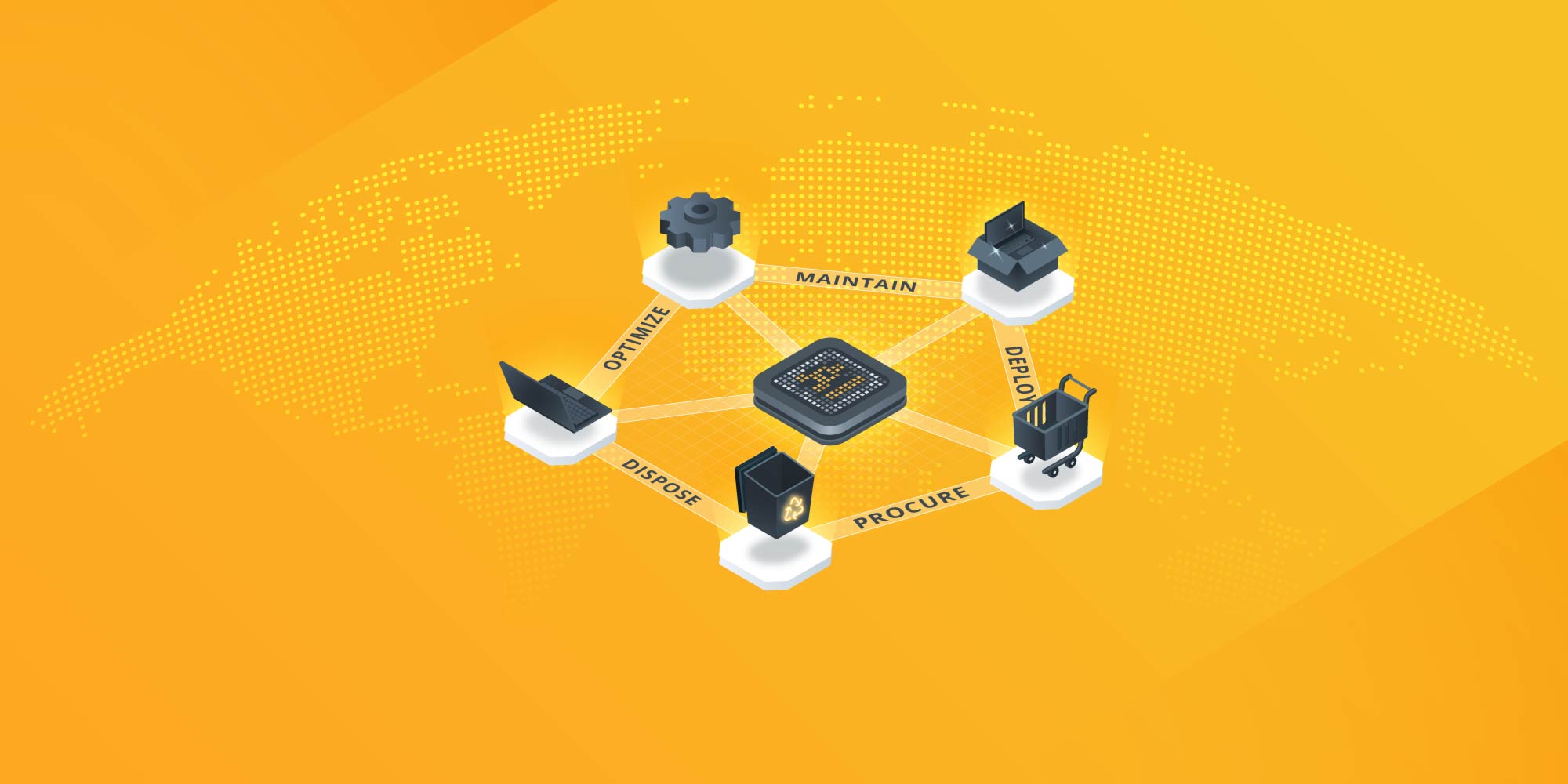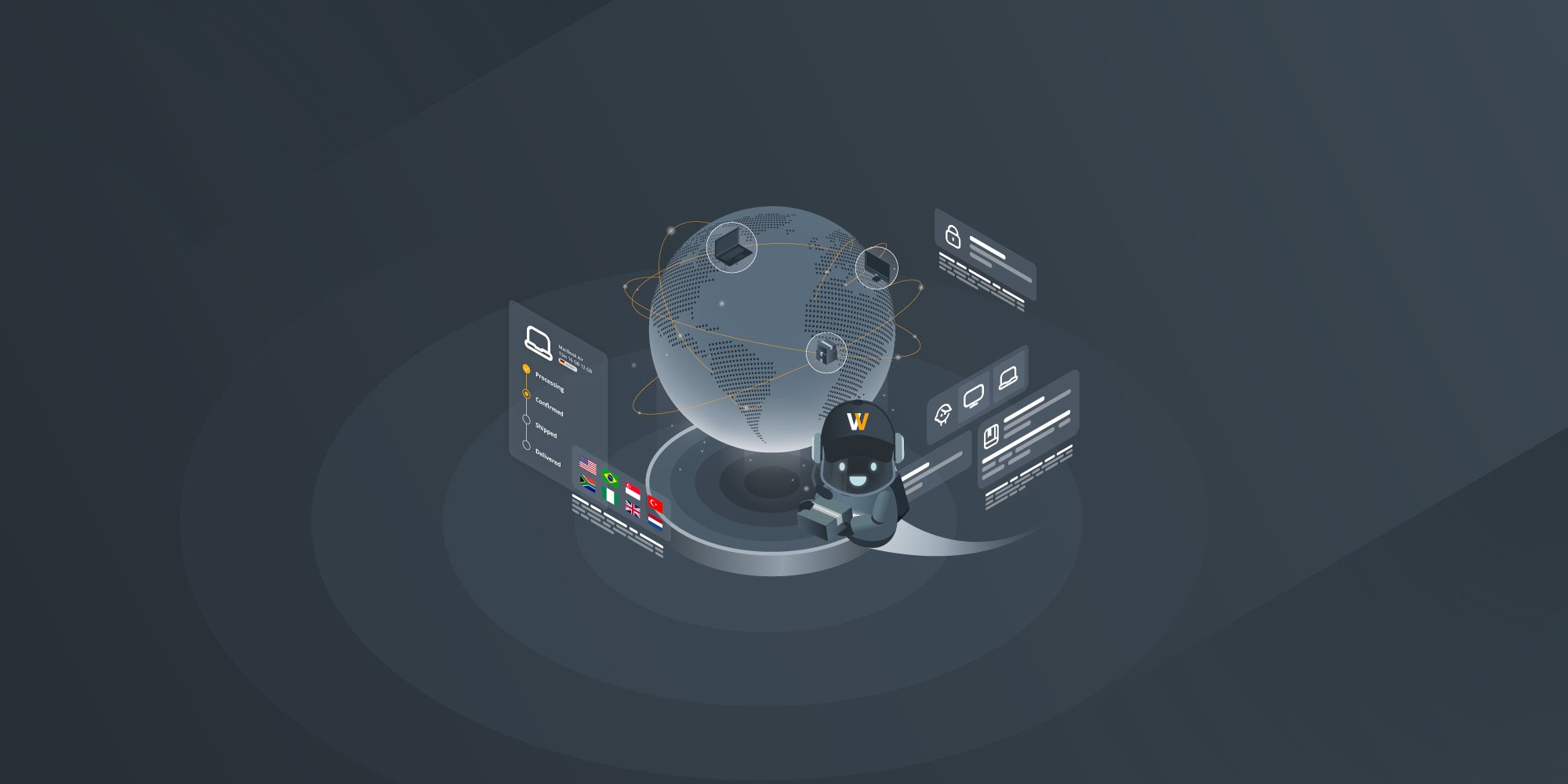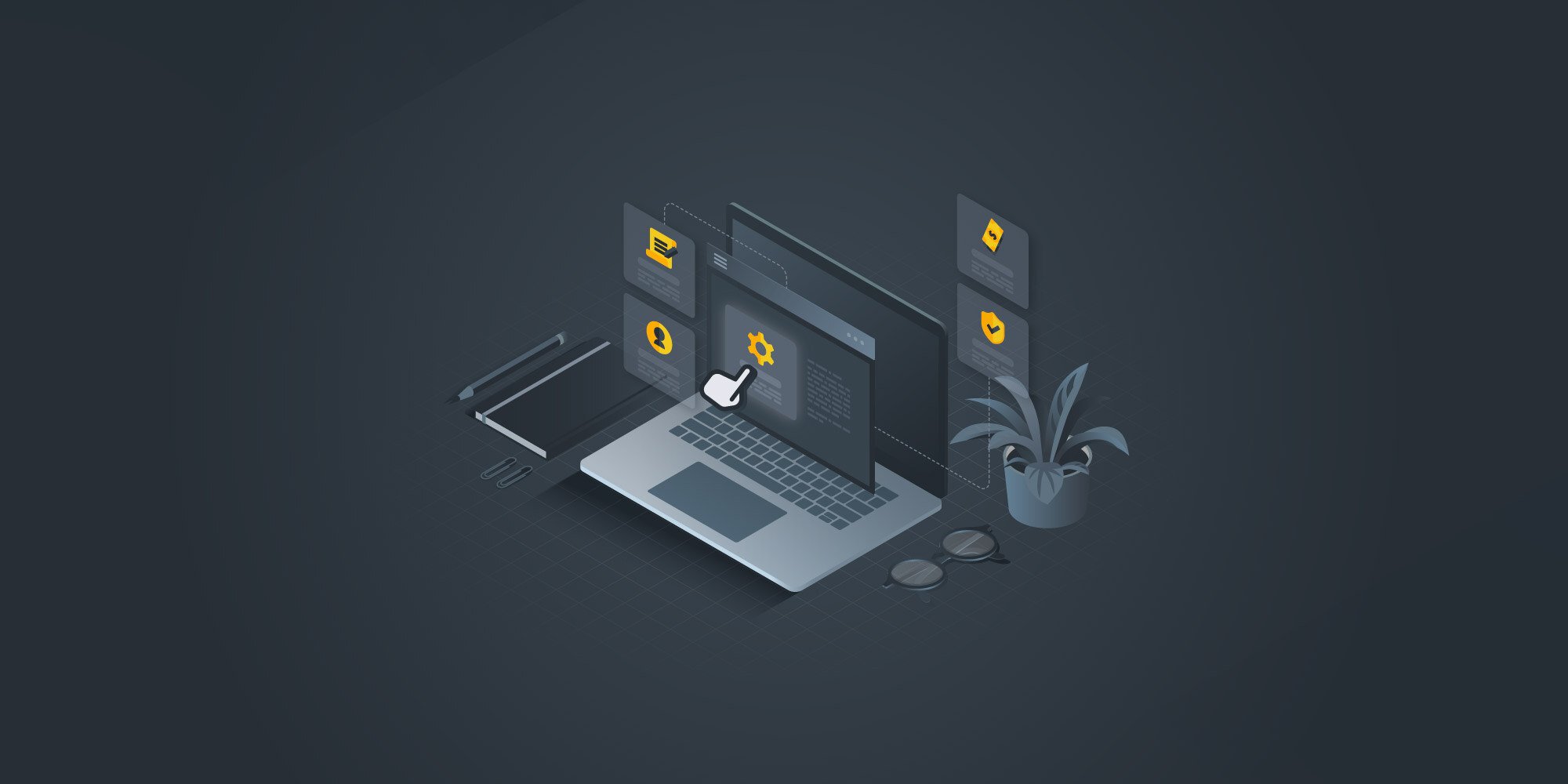How to master IT asset management for distributed teams
 Mara Quintanilla
Mara Quintanilla
The way we work has undergone a complete transformation in recent years. Due to the pandemic, companies of all sizes worldwide expedited the transition to distributed work arrangements. This transformation was expected to happen gradually over the coming years, but it was accelerated and completed within just a few months.
This evolution is not only a matter of location but also the use of tools and processes that enable effective collaboration from anywhere. As this trend appears set to continue, it prompts an important question: What new challenges will organizations face in this evolving workplace landscape?
In our webinar “Unlocking global growth: Mastering IT asset management for distributed teams,” we set out to answer that question by addressing the following topics:
- “Decade of change”: The way we work after the pandemic
- Challenges of distributed work environments
- How can an IT Asset Management platform help?
- Success stories to accelerate growth
You can watch the full webinar recording by clicking on the image below.
The speaker
Carlos Escutia is the founder and CEO of GroWrk. He established the company in 2019, just before the pandemic, and has since led its growth from a small team to over 70 employees. With extensive experience scaling businesses and mastering remote work and distributed teams, Carlos brings valuable insights into how distributed teams can achieve global growth.
The way we work after the pandemic

Despite discussions about returning to office spaces, distributed work is here to stay due to its economic advantages. Organizations are expected to continue embracing this model, with an estimated 36.2 million Americans working remotely by 2025.
The benefits for employees include an improved work-life balance, with 75% of remote workers reporting positive impacts, significant savings from reduced commuting, and more inclusive employment opportunities for women, minorities, and people with disabilities.
On the other side, employers are also seeing the upsides, with productivity boosts, real estate cost reductions, and a wider talent pool.
In today's world, nearly every company operates with distributed elements, whether physically in an office or not. Tools and workflows enable connectivity and collaboration from anywhere, even within traditional office settings where colleagues may work on different floors or locations.
A report from Stanford University found that remote work rates have doubled every 15 years, and researchers expect the increase to continue at even faster rates.
Challenges of distributed work environments
In this evolving reality of distributed work, what are the new challenges facing organizations that embrace this flexibility? One of the most significant challenges is managing IT infrastructure and everything it entails:
- Equipment procurement
- Logistics
- Compliance & security
- IT Asset Management
- Offboarding & retrievals
Equipment procurement
Unlike centralized office settings, where everything is on-site, and someone is always available to solve IT issues, distributed organizations lack this infrastructure. Team members could be spread across multiple locations globally, posing challenges in finding the right equipment and delivering it on time for those new joiners.
As Carlos explains:
"A lot of the challenges for organizations that are rapidly scaling are around not knowing how to procure those devices in the country or the regions where they're required. They have to go through traditional channels, either through existing vendors –and then deal with export-import hassle–or look up those vendors in those countries themselves and negotiate or work around the language barriers, tax implications, etc. This causes delays and unpredictable costs that are difficult to manage at scale."
Logistics
Logistics of equipment delivery is another hurdle, especially when onboarding employees in different countries on short notice, resulting in high shipping costs.
As Carlos describes it, it’s a situation that comes across quite often in traditional settings:
HR makes an offer, and ‘Hey, John’s starting in one week or two weeks, in Colombia, in Brazil, in another city within your home country.’ Now, you have to scramble to make sure that that device is procured and delivered on time so they can have a proper onboarding. Sometimes, you incur extensive shipping costs of thousands of dollars because of the rush. Just to give you some numbers, Brazil is one of those places. If you want to ship devices from the US to Brazil, you can spend up to $10,000."
This shift towards distributed teams also challenges businesses with storage and retrieval logistics. Without centralized storage facilities, many companies are forced to store devices in less secure and non-traditional locations such as employee apartments or co-working spaces, exposing them to unwanted risks.
When it comes to retrievals, particularly in the case of remote employees parting ways with the organization, the process becomes inefficient. It depends on various factors, including country-specific conditions and if the employee left on good or bad terms.
Additionally, the responsibility of tracking these returns falls on the company, typically via a third-party service, until the device is safely returned, introducing various logistical hurdles and inefficiencies in the system.
Compliance & security
Ensuring the proper data protection strategies for IT equipment is essential in a distributed setting. Organizations expose themselves to significant risks if devices are not enrolled in a device management solution or adequately protected by cybersecurity measures.
Surprisingly, 43% of organizations lack policies for data removal post-employment, emphasizing the importance of having the capability to wipe or shut down devices remotely to mitigate these risks.
The financial implications of these security lapses can be substantial. For instance, GDPR non-compliance penalties can soar to $20 million or up to 4% of an organization's global turnover, indicating severe financial repercussions.
Ensuring that devices are disposed of securely when they reach the end of their useful life, with all data properly erased and obtaining certificates of destruction, is also necessary for staying compliant.
According to IBM, the cost of managing data security is significant, with breaches averaging $4.3 million and escalating to $9-10 million in the US.
IT Asset Management
Managing devices' lifecycles presents significant challenges for IT teams, as they have to oversee every aspect of the value chain, from procurement to retirement and day-to-day operations.
This manual and inefficient workload diverts their focus from core IT needs to service the day-to-day requirements of remote employees.
Organizations typically handle these tasks internally, which involves time-consuming processes like locating technicians, evaluating and repairing devices, and returning them. This downtime translates into marked costs that many organizations cannot afford.
Efficient onboarding and offboarding processes are critical for managing workforce expansions and headcount changes. Managing collections, compliance, data security, and storage throughout the device lifecycle becomes increasingly complex, especially with a globally distributed workforce.
Offboarding & retrievals
Offboarding can pose significant security risks for distributed companies regarding data leaks. As Carlos details:
That's where the biggest security risk happens normally. How do you ensure that those team members are returning those devices and don't have any data they can use maliciously after they leave your organization? It happens, and it happens more often than you might think.
A whopping 91% of ex-employees retain access to company files post-offboarding. The issue for organizations is managing the legal implications of unreturned equipment. A common practice outside the United States is withholding the last paycheck until the departing employee has returned the device.
Meanwhile, retrieval services depend on using a third party, which requires much manual work. Ultimately, you require someone on your team to follow up with shipments and stay on top of this to ensure that those devices are being returned.
How can an IT Asset Management platform help?

As organizations scale and continue to hire from anywhere, these challenges become increasingly complex. Historically, organizations had to develop internal solutions, which required significant time, capital, and resources to maintain operational efficiency.
Fortunately, modern solutions like global IT asset management platforms exist to streamline these operations at the touch of a button.
The primary focus is helping organizations run more efficiently, cost-effectively, and securely, ensuring timely deliveries, compliance, and optimal asset management.
These are some of the key features that an IT asset management solution like GroWrk can provide:
- Global procurement: Consolidate vendor management across 150 countries into a single platform. Simplify procurement processes, approvals, and shipments, tailored to your existing workflows through seamless integration.
- Procurement logistics: Navigate logistics and customs regulations effortlessly across various countries. Track asset locations, deliveries, and storage from a centralized platform accessible to stakeholders across departments.
- Security and compliance: Ensure zero-touch delivery of pre-configured devices meeting security standards. Simplify device enrollment and management, and automate security policies and compliance checks with a click.
- Minimizing downtime: Access to an AI-powered chatbot for instant troubleshooting, reducing reliance on traditional help desk ticketing. Expedite device replacements and repairs to minimize employee downtime.
- Lifecycle management: Gain real-time insights into device health and performance. Proactively identify and address issues, schedule replacements, and optimize asset lifecycle management.
These features empower organizations to manage IT assets efficiently, enhancing productivity, reducing costs, and mitigating risks associated with distributed workforces. By leveraging modern IT asset management solutions, organizations can easily navigate global operations and adapt to evolving business needs.
Success stories with GroWrk
GroWrk serves hundreds of the leading companies worldwide with thousands of employees globally. The following are just a few examples of customers who successfully implemented GroWrk to manage their IT assets globally.
CCI Systems

CCI Systems needed to equip a new engineering hub in India but had no prior infrastructure or knowledge of the local market.
Through our collaboration, we streamlined their onboarding process by deploying the necessary Mobile Device Management (MDM) solutions, enabling them to equip classes of 30 to 50 employees every two weeks.
Over the past year and a half, GroWrk facilitated the onboarding of over 800 new hires, all equipped with the tools they needed for remote work. This success story highlights how our solution supported CCI Systems' rapid scaling and remote operations in India.
Orium
Orium was expanding operations across Latin America. They faced challenges with costly equipment procurement and relationship management with vendors across multiple countries.
By working with GroWrk, Orium received timely laptop deliveries in six countries, providing an excellent onboarding experience aligned with their organizational values.
GroWrk facilitated the procurement and delivery of devices for 30 employees across these countries, ensuring each onboarding reflects Orium's commitment to its team members.
The future of IT asset management
AI is a hot topic in the tech world, and IT asset management is also benefiting from this technology. At GroWrk, we’re at the forefront of implementing AI-powered features that can significantly improve processes, SLAs, and cost efficiency for our users.
The way we focus on leveraging AI within GroWrk revolves around two main questions:
- How can we help our operations and our customers improve their processes significantly?
- How can we apply that technology to help them save money and time in their daily lives?
Artificial intelligence can work with historical data and analyze usage patterns across geographies. By connecting this data with existing inventory and pricing numbers, AI can suggest procuring a number of devices ahead of time to lock in preferred pricing. This can help to optimize procurement strategies and reduce costs.
As Carlos describes:
"Unlocking value with AI is around having the data needed to help it optimize in terms of processes, in terms of access to better pricing, in terms of improving delivery times, and SLAs in general, which translate into great savings for our customers."
Wrapping up
Distributed work is here to stay, but it doesn’t come without challenges. For global companies with employees working remotely, procuring, deploying, managing, and retrieving IT equipment is a game of complex logistics.
The value of investing in solutions like GroWrk is that they can automate these processes instantly, saving businesses time and resources. They also improve overall efficiency and provide a better user experience.
Book a demo today to learn more about how GroWrk can optimize your IT asset management strategy across 150 countries.








